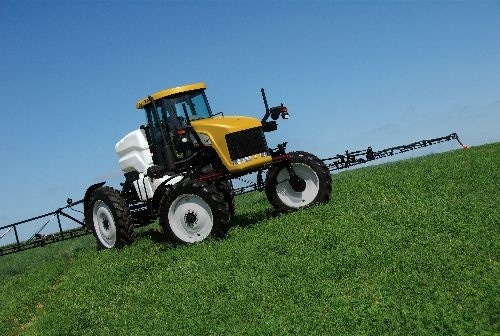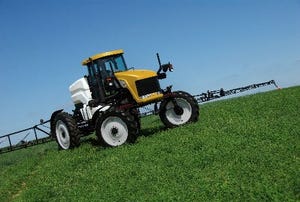

The off season is the perfect time to prep your self-propelled sprayer for spring application of farm chemicals and fertilizer.
“The window for spring application is already narrow, so the first opportunity to get in the field shouldn’t be jeopardized by equipment downtime,” says Arnie Sinclair, AGCO Application Equipment national accounts manager. “A little off-season maintenance now, rather than in the spring, is worth the investment of time.”
Sinclair suggests the following maintenance actions to prevent problems during the rush of spring:
Clean the machine thoroughly to prevent premature rust from crop protection chemicals.
Flush liquid systems with water and cleaning agent as specified by chemical label.
Remove end caps and flush boom tubes.
Clean nozzles and check for wear. Use air compressor to clean nozzle orifices.
Grease all service points after cleaning.
Check wiring for routing, protection and proper connections.
Adjust breakaway tensions.
Inspect hydraulic hoses for wear and consider replacing excessively worn hoses.
Accurately inflate tires according to manufacturer recommendations for storage.
Check lighting to make sure it is functional for both roadway and in-field operation.
Replace missing or rusty hardware and fasteners and make sure they are properly tightened.
Put anti-freeze solution in tank using a 50/50 mixture of propylene glycol and water. Sinclair recommends about 20 gallons of mixture for SpraCoupe 4000 and 7000 Series tanks. Circulate through all system circuits and discharge through the boom until some anti-freeze solution exits each spray tip.
Replace damaged or missing decals and safety signs.
Touch up chips, scratches and rusted areas with appropriate protective paint.
Sinclair says maintenance should be part of a year-round routine. In the spring, farmers can turn their attention to things like seasonal fluid changes, checking lights, tire inflation, and controller calibration verifications.
“Your owner’s manual and local sprayer dealer are good resources to help you devise a checklist and annual timeline of parts to inspect,” Sinclair adds. “They also can recommend which replacement parts to keep on hand for quick repairs during the season and help set inspection dates.”
About the Author(s)
You May Also Like






